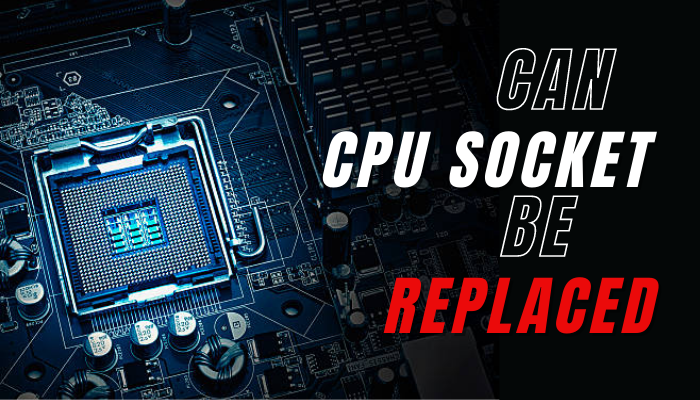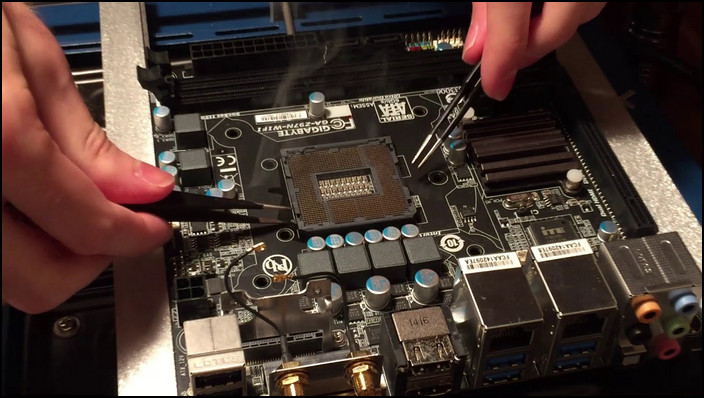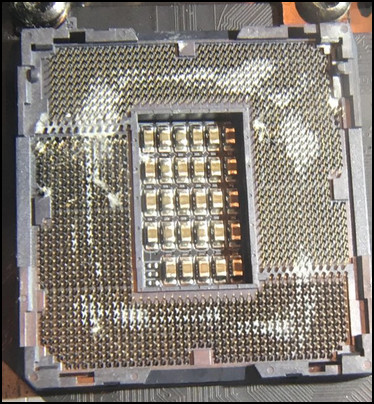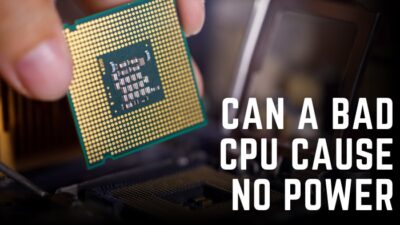It will be total chaos if you accidentally drop the processor in the CPU socket and bend a few pins while installing.
With a bent or broken pin, the socket won’t detect the CPU, and a red light will flash on the motherboard. You can correct the bend pins, but what about the broken ones?
Can you replace the socket to avoid buying a new motherboard?
Well, This article will let you know the chances of replacing a CPU socket. So, read till the end to know it. Let’s begin!
What are the Reasons for Replacing a CPU Socket?
Replacing a CPU socket becomes undeniable when the motherboard is very expensive, and the socket gets permanent damage. You can call it a damaged socket when some pins get broken while installing the CPU insecurely. Motherboard sockets sometimes get wrecked due to overheating.
A damaged CPU socket isn’t uncommon for old motherboards because the pins might get worn out from swapping in & out the CPU countless times.
However, there are other reasons behind a damaged CPU socket. But first, you need to identify whether the CPU socket is damaged by analyzing the socket properly. Then take the necessary steps.
Some people want to change or replace the CPU socket, even if it’s not damaged. But why would anybody want that?
The fact is, when manufacturers launch a new processor, they change the socket type as well. And it’s normal because of the change in the microprocessor architecture in the CPU. The architecture of a CPU varies from generation to generation.
Speaking of this CPU’s architecture, if you want to know your CPU’s architecture, you can reveal it with some simple methods. For installing the latest gen CPUs, you must need a new socket-supported motherboard, at least for Intel.
To avoid spending money on a new motherboard, some might want to change the CPU socket only to install the latest processor.
However, is it really possible to change the CPU socket type on the same motherboard? You’ll find out later in this article. But before getting on that, make sure you have installed the CPU correctly to avoid damaging the socket.
How to Identify a Damaged CPU Socket
Improper CPU installation and overheating can cause critical physical damage to a motherboard’s CPU socket. When the damage is serious, the PC won’t boot, and you might see a red light flashing on the motherboard. This happens because the CPU won’t connect with the motherboard through pins.
At present, there are two types of CPU sockets available, one is LGA, and another one is PGA. LGA stands for Land Grid Array, and PGA stands for Pin Grid Array. There are lots of difference between LGA and PGA socket. Among these, Intel uses the LGA socket for their processors to connect with the motherboard.
In this LGA design, the socket has pins, and the CPU has a flat surface. When you install the CPU, its flat surface contact points land on those pins.
AMD, on the other hand, uses the PGA socket. That’s why APUs have pins, and motherboard sockets have landing points to insert those pins. However, AMD shifted to the LGA socket design with their latest Zen 4 architecture-based Ryzen 7000 series processors.
But, the chance of damaging the socket is high in LGA sockets. So, when you’re suspecting the socket is damaged, how to ensure that?
As I stated earlier, when the PC can’t boot after trying several times or failing to POST, it’s one of the common symptoms that the motherboard isn’t detecting the CPU. To ensure a damaged socket, you must closely inspect the socket pins first.
For that, use a magnifying glass and look for bent or broken pins. If found, then the socket is already damaged. Sometimes, you won’t see any bent or broken pins because the socket might have internal component damage.
Is it Really Possible to Replace a CPU Socket?
Replacing a CPU socket of the motherboard, it’s possible. But the process is so hard that only a highly expert hardware technician can do this. Firstly, you need to desolder each pin from the socket and remove them clearly. Then, attach the new socket and solder all the pins in the exact place.
Well, that sounds crazy! And the entire procedure takes a long time. While desoldering those pins, you should keep an eye on the other components, because a slight mistake can kill the motherboard.
The latest 13th gen Raptor Lake is based on LGA 1700 socket, and it contains 1700 protruding pins to connect with the processor. Whereas the previous 12th gen Alder Lake is based on LGA 1200 socket that has only 1200 protruding pins.
So, can you imagine soldering 1700 densely standing pins on a socket?
It’s like repairing your iPhone, which is run over by a war tank. First, you must collect the phone’s shattered pieces one by one before repairing it.
I bet you’re sweating right now! Plus, before desoldering, you must apply enormous heat, but you must protect the side electric component besides the socket. Otherwise, heat will damage those badly.
But you don’t need to do that by yourself because there are a few hardware repair stores that offer this kind of socket replacement service.
But they don’t guarantee success, plus you must pay a large amount for that with additional shipping costs. Suppose you need to replace a damaged LGA 1151 socket-based board. For changing the socket, you might need to pay more or less $49.99 with $18.99 extra for shipping costs.
While you can buy a good & new LGA 1151 socket-based motherboard for only $100 and for a used motherboard, you need to spend only $50. So, I’ll suggest going for a new or used one instead of replacing the socket.
However, if you have an expensive motherboard, you should replace the socket. And doing this will cost only one-third of its new price.
But if you’re thinking about changing the socket type of the motherboard, you can definitely do that in your dreams. Installing different socket types in a motherboard isn’t possible because different models’ motherboards are made for different sockets.
So, before buying a PC, you must know which motherboard is compatible with your CPU because socket design varies from gen to gen.
And the design includes the number of pins, signal timing, the voltage on pins, and so on. So, if you’re not a tech god, you can’t install a different type of socket on a motherboard.
FAQs
Is it possible to fix broken CPU socket pins?
The chance of fixing a broken pin is minimal, and it’s quite an impossible task. But you can fix it with some special types of equipment, though it’s risky and costly.
Can you correct a bent CPU socket pin?
Yes, you can correct bent pins, but you must need a magnification glass and tweezers for it. Ensure your fingers are rock steady and don’t apply too much pressure while correcting those bent pin positions.
Can you replace the CPU sockets on the motherboard?
You can replace the CPU socket, but it’s one of the hardest repairing procedures. Plus, it’s costly, and only a few hardware repair companies offer CPU socket replacement.
Wrapping Up
CPU socket pins are fragile, and even slight pressure can bend them. Plus, you can’t ask for a warranty because this sort of damage is out of warranty coverage. So, replacing the socket can be a great option if the motherboard is expensive.
For cheap or mid-range motherboards, you must go for a new or used one instead of replacing its socket. Replacing the socket is possible, but few repair shops offer that, and it’s costly.
So, it’s up to you now. Leave a comment in the box below in case you need more information. Best of luck!




